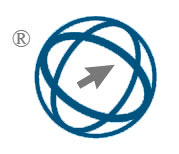Enhanced YOLOv5s-Based Apple Detection for Harvesting Robots Using a Multi-Rotated Box Algorithm
Abstract
The apple picking robot makes use of a number of technologies, one of which is the apple target identification algorithm. When it comes to automated apple picking, the robots' optical systems are crucial. Generally speaking, it finds ripe apples by taking photographs of its environment, processing them, and then analyzing the findings. The inability of traditional vision algorithms to process complex backdrops hinders the efficiency of harvesting robots. The continuous development and refining of the CNN have led to a substantial improvement in its efficacy in target identification during the last several years. The current crop of apple recognition algorithms struggles to tell the difference between partially obscured apples and ones entirely concealed by tree branches. Direct use of the algorithm endangers the harvesting robot's mechanical arm, apples, as well as gripping end-effector. In response to this real-world issue, we provide a lightweight apple targets identification approach for picking robots based on enhanced YOLOv5s. This method can automatically identify which apples in an apple tree picture are graspable and which ones are not. This method is able to circumvent the impact of light transformation, in contrast to the conventional segmentation approach. When there is a lot of resemblance between the fruit and the backdrop, though, it becomes more challenging to get strong recognition results. With a recall rate of 98%, a detection speed of 47 f/s, and a mAP (mean Average Precision) of apple detection of 98.13%, the findings demonstrate that the YOLO v5 network has perfect properties. The YOLO v5 is able to simultaneously fulfill the accuracy and speed criteria of apple identification, in contrast to more conventional network models like Faster R-CNN and YOLO v4. The experiment culminates with the employment of the apple-harvesting robot that the researcher developed themselves. Results demonstrate that the robot has a harvesting success rate of 99.2% in 9.5 seconds. Because of these improvements in accuracy and speed, the suggested apple detecting approach is preferable. Innovative concepts for intelligent agriculture and apple-harvesting robotics may emerge from it.
Full Text:
PDFDOI: https://doi.org/10.31449/inf.v49i18.7918

This work is licensed under a Creative Commons Attribution 3.0 License.









